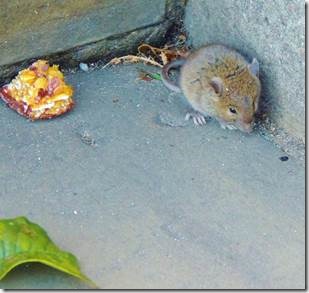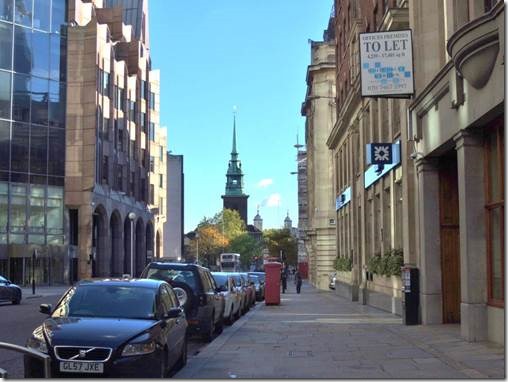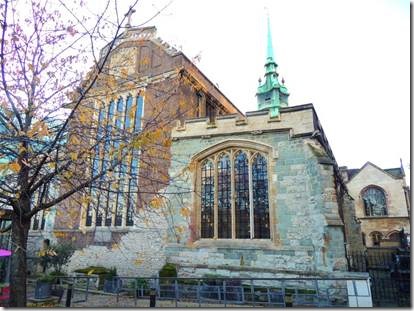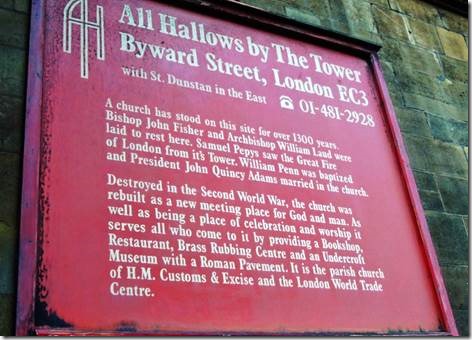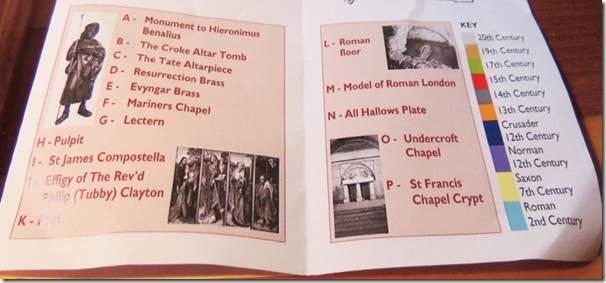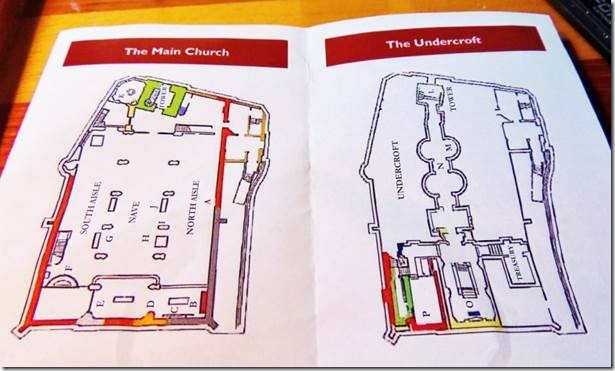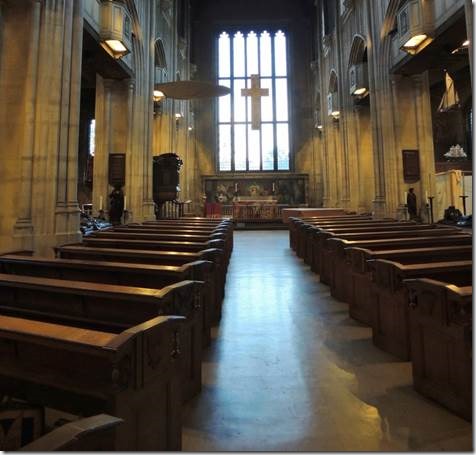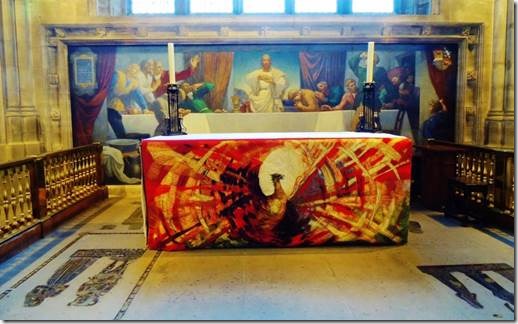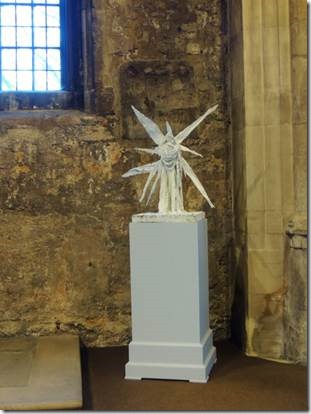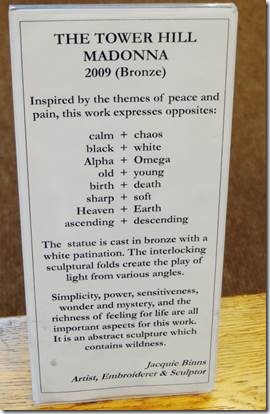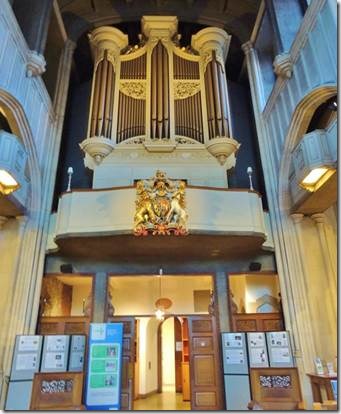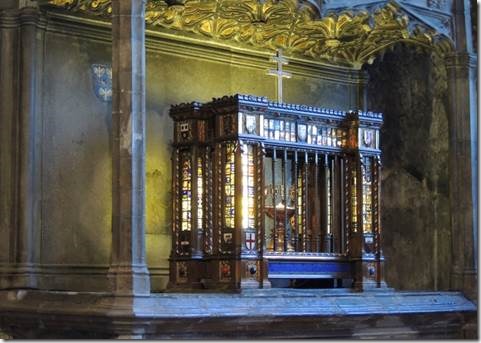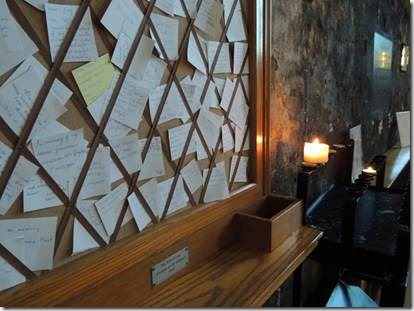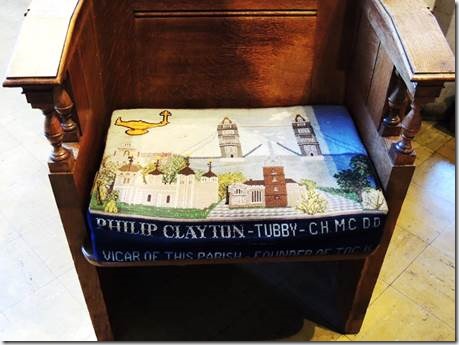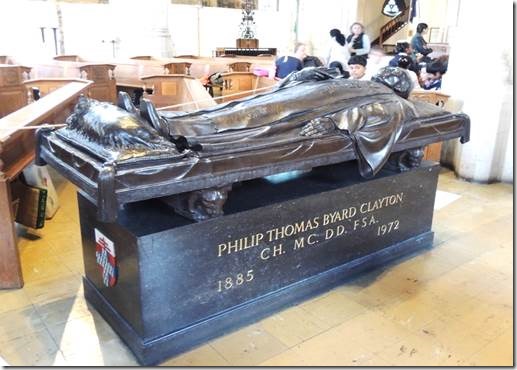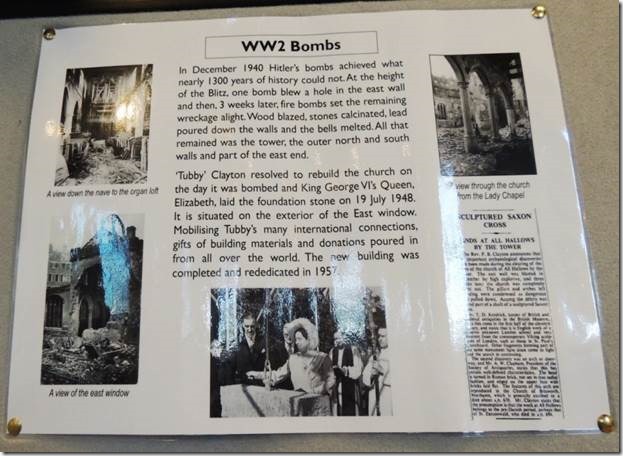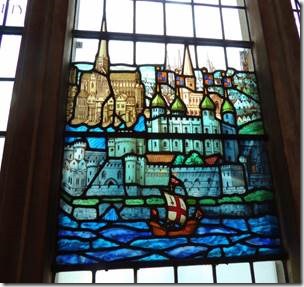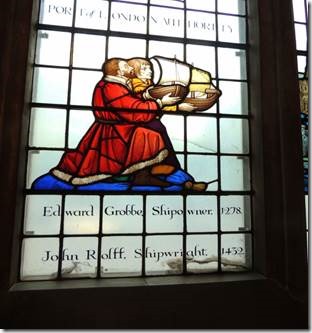Cheers,
My emails seem to be fewer and further between since we returned to London. Just too much to research about everything we see. During the walking tours we hear lots of stories, but there’s no chance to write them down. I lag behind to take photos and then have to jog along to catch up. Before I send out these emails I have to try to find out what’s so important about all those photos I took during the walk. I don’t mind because I learn lots, but also learn what I missed so have to return to learn more about that church or that lane or whatever. I had to do that to research All Hallows Church.
Today I had to return to Lovat Lane and St Mary’s on Hill because we’d really only passed by those places. Among other things I went looking for the statue of two mice fighting over a piece of cheese. I didn’t find it so I’ll have to return now with a better set of directions. I was also trying to find out more about the skull and crossbones over the alleyway entry to St. Mary’s on Hill. While at St. Mary’s on Hill I had a lovely discussion with a “church watcher.”
http://www.london-city-churches.org.uk/ “The ‘new’ Friends of the City Churches came into being in 1994, bringing together many people who cared for and valued the City’s churches, with the aim of ensuring that the churches would be preserved intact for posterity and, most importantly, be kept open to visitors on a regular basis.” Church watcher Kathy, who introduced me to the doings at the church, is from Connecticut, went to Tufts, and now after working many years in England, lives here. But more about her and Maryanne when I write about St. Mary on Hill.
As for the mice…..“On the Philpot Lane side of 23 Eastcheap is one of London’s smallest statues, of two mice eating or fighting over a piece of cheese. The statue’s exact origin is unclear but it is thought to date from 1862 and was possibly made for the spice merchants Hunt and Crombie by John Young & Son. Another theory surrounding its existence is that it commemorates an incident where an argument broke out between two construction workers when one accused the other of eating some of his lunch, and during the ensuing altercation one of the men fell from the building to his death. It was later found that mice were the culprits.” I am determined to find those mice!
A real tiny mouse!
On my way back to DoraMac just near one of the Tower Hill Exits I saw this adorable fellow. I hated to watch him struggle up the stairs trying to go who knows where. I gave him some of my snack but the tiny mouse wasn’t the least bit interested. A Russian tourist came along and he too took photos wishing good luck to the tiny mouse. This man reminded me of the family next to us in Ashdod, Israel who took turns with us feeding the kitten who lived between our boats.
This email actually concerns the main floor of All Hallows Church by the Tower. All Hallows was one of the stops on our Square Mile tour that started with The Monument. All Hallows wasn’t actually our second stop, St. Mary’s on Hill and St. Dunstan were stops before we arrived at the corner where our guide spoke about All Hallows as well as The Tower. But All Hallows is supposedly the oldest church in London so a Big Deal. This email concerns the street level floor, the main floor of the church as it is used today. The lower floor includes the crypt museum which isn’t as creepy as it sounds. I’ll write about that next.
Ru
All Hallows by the Tower
“Shamefully isolated on Tower Hill, between a busy road and an appalling modern shopping precinct, is THE OLDEST CHURCH IN LONDON, All Hallows by the Tower. It was founded in 675, as a chapel of the Great Abbey of Barking, and hence is sometimes known as All Hallows Barking. Inside, a 7th-century Saxon arch containing recycled Roman tiles stands at the south-west corner, THE OLDEST SURVIVING PIECE OF CHURCH FABRIC IN LONDON.
Half-way down the stairs to the medieval Undercroft is a tiny, barrel-vaulted chapel of bare, crumbling stone, dedicated to St Clare. Though only yards away from the uproar of Tower Hill it is one of the most peaceful places in London to sit and think. On entering the Undercroft you can actually walk on a remarkably well-preserved section of tesselated Roman pavement laid down here in the 2nd century. At the east end in the Undercroft Chapel is an altar made of stones from the Templar church of Athlit, in Israel, and brought back from the Crusades. Recesses in the walls hold boxes filled with the ashes of the dead. Charles I’s Archbishop, William Laud, was buried in a vault in this chapel for over 20 years after his beheading in 1645. At the Restoration his body was moved to St John’s College, Oxford.
In 1535 the bodies of St Thomas More and Bishop Fisher were brought into the church after their execution at the Tower for refusing to sign Henry VIII’s Act of Supremacy.
LANCELOT ANDREWES (1555 – 1626), the scholarly Bishop of Winchester, was baptised at All Hallows in 1555. He was the last occupant of Winchester Palace in Southwark and is buried in Southwark Cathedral.
In 1650 some barrels of gunpowder that were being stored in the churchyard exploded, destroying some 50 houses, badly damaging All Hallows and causing many fatalities. In 1658 the church tower was rebuilt, THE ONLY EXAMPLE OF WORK CARRIED OUT ON A CHURCH IN THE CITY DURING THE COMMONWEALTH (1649 – 60).
In 1644 WILLIAM PENN, the founder of Pennsylvania, was baptised at All Hallows. Twenty-two years later in 1666 Penn’s father, Admiral William Penn, saved All Hallows from the Great Fire of London by ordering his men from the nearby naval yards to blow up the surrounding houses as a fire break. Samuel Pepys climbed ‘up to the top of Barking steeple’ to watch the fire and there witnessed ‘the saddest sight of desolation’ before he ‘became afeard to stay there long and down again as fast as I could’.
The following year, 1667, JUDGE JEFFREYS, James II’s notorious ‘hanging judge’, was married at All Hallows. In 1797 JOHN QUINCY ADAMS, later to become 6th President of the United States, married Louisa Catherine Johnson, daughter of the US consul in London, in All Hallows.
From 1922 to 1962 the Vicar of All Hallows was the REVEREND PHILIP ‘TUBBY’ CLAYTON who, as an Army chaplain in 1915, ran a rest-house and sanctuary for soldiers of all ranks at Poperinge in Belgium. It was named Talbot House in memory of Lieutenant Gilbert Talbot, brother of Army chaplain the Revd Neville Talbot who had set up the rest-house. Talbot House became known by its signals code name of TOC H. After the war Clayton fostered the spirit and intent of Talbot House through the Toc H movement and encouraged the setting up of Toc H branches in cities across Britain.
Among the surviving treasures of All Hallows are a wonderful collection of medieval brasses, a rare 15th-century Flemish triptych and what many regard as THE FINEST WOOD CARVING IN LONDON, a font cover carved in lime-wood by Grinling Gibbons in 1682 http://www.nextreads.com/display2.aspx?recid=6943877&FC=1
http://www.allhallowsbythetower.org.uk/history/ official Church site
|
Looking down Tower Street towards All Hallows Church and the original White Tower of The Tower of London. |
|
http://www.allhallowsbythetower.org.uk/visiting/virtual-tour/ is a wonderful online tour talking about things I saw but much that I missed. |
|
The Nave I think is the correct term? |
|
Phoenix Altar Frontal not explained on the All Hallows site but the painting is described in the virtual tour. |
|
For Sharon and Asher Organ concerts are given in the afternoons and one day I will go listen |
|
Croke Altar Standing in the Lady Chapel is the altar tomb of Alderman John Croke (1477) which was destroyed by the air-raid of 1940. It has since been completely restored from over 150 fragments. The tomb is made of Purbeck marble, and fine brass memorials at the back of the tomb record the effigies of the Alderman and his eight sons, Margaret his wife and his five daughters. The casket containing the Toc H lamp, given to the movement in 1922 by Edward, Prince of Wales, also contains stained glass shields depicting the arms of places where branches of the Toc H were founded between 1919 and 1929. http://www.allhallowsbythetower.org.uk/visiting/virtual-tour/b–croke-altar/ |
|
Prayer messages |
|
I took the photo because of the images of London, but since then learned a bit about “Tubby” Clayton |
|
The effigy of the Rev’d Philip Thomas Byard Clayton (popularly known as ‘Tubby’) is one of the last works by Cecil Thomas, the ‘soldier sculptor’, who also made the Forster Memorial in the south aisle of the church. Tubby’s dog sits on a tasselled cushion at his feet and the effigy is supported by four lion cubs, one at each corner. Tubby was the founder Padre of Toc H. Assisted by fellow army chaplain Neville Talbot, he established Talbot House (‘Toc H’ in signaller’s jargon), a unique rest house in Poperinge for serving soldiers near the fierce battleground of Ypres in Flanders during the First World War. Tubby became Vicar of All Hallows in 1922 and remained here for forty years, until his retirement in 1962. http://www.allhallowsbythetower.org.uk/ |
|
Destruction during WW 2 |
|
Stained glass windows show London’s connection with the Thames |

